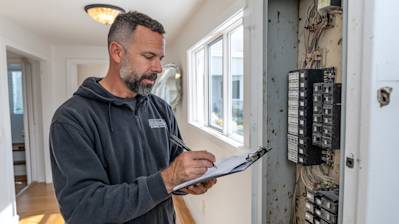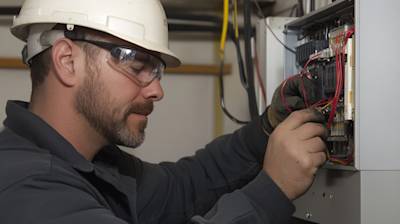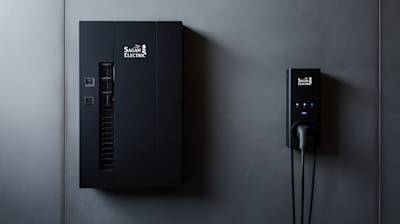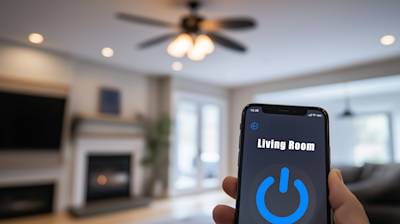How To Test If A Wire Is Live
Electrical systems are the lifeblood of modern living, powering our homes, offices, and industries. However, working with electricity demands utmost caution and a thorough understanding of the systems involved. One crucial step in this process is determining whether a wire is live before any work begins. As an experienced residential electrical contractor serving Sacramento, Sagan Electric is committed to sharing a comprehensive guide on how to safely test if a wire is live. By following these steps and adhering to safety protocols, you can prevent accidents, injuries, and even fatalities.
Understanding Wire Voltage
What is Wire Voltage? Wire voltage is the potential energy that drives electric current through a conductor. It's the force behind the flow of electrons in an electrical circuit. Knowing whether a wire is live or not is vital to prevent unexpected shocks or hazards when working with electrical systems. Before embarking on any electrical project, understanding the basics of wire voltage is crucial for your safety and the safety of those around you.
The Risks of Working with Live Wires Working with live wires without proper testing can have disastrous consequences. Electrical shocks, burns, and fires are just some of the potential hazards. Properly testing for live wires is not just a best practice; it's a legal requirement for Electrical Safety Inspection in Sacramento. Neglecting this step can result in legal penalties and, more importantly, serious harm to individuals and property.
Proper Safety Precautions When Test For Live Wires
Prioritize Safety at All Times Safety is paramount when working with electricity. Before even considering testing a wire for voltage, ensure you are equipped with the right safety gear. Insulated gloves, safety goggles, flame-resistant clothing, and non-conductive footwear are essential. Always work in a well-ventilated area, and never rush through safety procedures.
Safety Equipment and Tools In addition to personal protective equipment, the tools you use for testing wire voltage play a crucial role in ensuring your safety. Having the right equipment on hand can mean the difference between a successful test and a potentially hazardous situation. Some of the necessary tools include non-contact voltage testers, voltage meters (multimeters), insulated screwdrivers, and voltage detectors.
Using a Non-Contact Voltage Tester
How Non-Contact Voltage Testers Work Non-contact voltage testers are user-friendly tools designed to detect the presence of electrical voltage without making physical contact with the wire. These testers use electromagnetic fields to identify voltage and are particularly useful for preliminary assessments.
Safe Usage Steps:
- Turn on the tester and hold it close to the wire.
- If the tester emits an audible alert or visual indication (such as a flashing light), voltage is present.
- Maintain a safe distance from the wire while using the tester.
How To Use a Voltage Meter (Multimeter)
The Versatility of a Multimeter A multimeter is a versatile tool that measures voltage, current, and resistance in electrical circuits. It's an indispensable tool for any electrical work, allowing you to accurately assess the status of a wire.
Setting Up the Multimeter:
- Set the multimeter to the appropriate voltage range (AC or DC).
- Insert the probes into the correct ports.
- Touch the probes to the wire's exposed parts or terminals.
Steps for Testing Wire Voltage with a Multimeter
Preparing the Multimeter:
- Ensure the multimeter is set to the correct voltage mode (AC or DC).
- Check that the probes are properly inserted into the designated ports.
Testing Process:
- Gently touch the wire's exposed parts or terminals with the probes.
- Read the multimeter display to determine the presence of voltage.
- If voltage is detected, exercise extreme caution and avoid direct contact with the wire.
Double-Checking Wires with a Voltage Tester
Why Double-Check? Even after testing a wire with a multimeter, it's crucial to double-check with a non-contact voltage tester. This redundancy provides an extra layer of safety, ensuring that you haven't missed any live wires.
Using the Voltage Tester:
- Hold the voltage tester close to the wire.
- If the tester indicates voltage, reassess your approach and take necessary precautions.
- If the tester remains silent, you can proceed with confidence.
Additional Safety Considerations When Testing Live Wires
Isolation and Circuit Disconnection Before testing, ensure the circuit is isolated and disconnected from the power source. This step prevents accidental energization and reduces the risk of shock.
Professional Assistance and Complex Scenarios For intricate systems or situations where you're unsure, seeking professional electrical troubleshooting and repair services is a wise choice. A seasoned residential electrical contractor like Sagan Electric can address complex issues while maintaining the highest safety standards.
Testing Different Types of Wires and Circuits
Variations in Testing Methods Different types of wires, such as insulated and exposed wires, require tailored testing approaches. For insulated wires, use insulated tools to access conductors safely. Additionally, adapt your testing process for different circuits, whether they operate on AC or DC voltage.
Handling Unexpected Readings
Possible Reasons for Unexpected Readings:
- Interference: Nearby electromagnetic fields can affect readings. Test away from potential sources of interference.
- Faulty Tools: Malfunctioning equipment can yield inaccurate readings. Regularly calibrate and maintain your tools.
- Circuitry Issues: Internal faults within the circuit can lead to abnormal readings. Consult a professional for thorough troubleshooting.
Documenting and Recording Findings
The Importance of Documentation: Keeping accurate records of your testing results is essential for future reference and compliance. Document the date, location, wires tested, and voltage readings. These records provide a historical context and a basis for decision-making in subsequent electrical work.
Prioritize Safety at All Times
In your journey through the realm of electrical systems, safety should be your guiding star. Whether you're a seasoned DIY enthusiast or a professional, never compromise on safety when dealing with electricity. Sagan Electric, an experienced residential electrical contractor, is dedicated to ensuring your safety and the efficiency of your electrical systems. By following the guidelines outlined in this comprehensive guide, you're not just ensuring your well-being but also contributing to the broader goal of accident-free electrical work. Remember, every step you take to test for live wires brings you closer to a safer, brighter future. Stay empowered and stay safe!
Tags: How To Test If A Wire Is Live,








